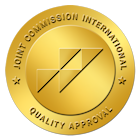Tramadol addiction poses significant risks, particularly due to its potential for dependency and the challenges of withdrawal. This prescription pain reliever, though often viewed as less potent, can lead to physical and psychological addiction, especially when misused or taken long-term. Those struggling with tramadol addiction need to seek professional support to manage withdrawal symptoms and recovery.
Facilities like Crestview Recovery offer specialized programs to address the complexities of tramadol dependence, combining medical supervision and therapeutic approaches tailored to individual needs. Through a structured recovery plan, patients can safely overcome the challenges of tramadol addiction.
What is Tramadol?
Tramadol is a prescription pain reliever used to manage moderate to moderately severe pain. It acts on the central nervous system to block pain signals and is often prescribed for conditions like chronic pain or after surgery. Although it is considered less potent than opioids like morphine, tramadol still carries significant risks, especially when taken in higher doses or over prolonged periods.
While tramadol has therapeutic uses, it can become a high-risk drug due to its potential for dependence and abuse. Its effects on the brain’s opioid receptors make it susceptible to misuse, leading to both physical and psychological dependence. When taken in higher amounts or combined with other substances, tramadol use can lead to severe health risks, including respiratory issues, overdose, and life-threatening interactions.
Even though tramadol is sometimes prescribed as a safer alternative to stronger opioids, the potential for misuse is still present. Long-term use or attempts to self-manage pain with tramadol can increase the risk of addiction. Therefore, it’s recommended that individuals use tramadol strictly as prescribed and seek guidance from medical professionals for any concerns, especially those who may have a history of substance misuse or are vulnerable to developing dependency.
Is It OK to Take Tramadol Daily?
Taking tramadol daily can be appropriate if prescribed by a doctor for managing chronic pain. Tramadol, while helpful for pain relief, can lead to challenges that require careful monitoring over time. Beyond dependency and tolerance, long-term use may also contribute to side effects such as gastrointestinal issues, drowsiness, or mood alterations. Even in small doses, tramadol’s interaction with the central nervous system can impact mental clarity and may increase risks for those with conditions like anxiety or depression.
In some cases, alternative approaches such as mindfulness techniques, acupuncture, or even lifestyle adjustments (e.g., exercise, and diet changes) can complement or replace daily tramadol use. A healthcare provider can offer insights into these options, allowing for a customized treatment approach that prioritizes safety and effectiveness while minimizing tramadol reliance.
What Are the Tramadol Addiction Risks?

Tramadol addiction poses several risks, primarily due to its potential for physical and psychological dependence. Although it is prescribed to manage pain, tramadol can be misused for its euphoric effects, leading to misuse and abuse. This opioid-like behavior increases the likelihood of developing an addiction, particularly when taken in larger doses or over long periods.
One major risk of tramadol addiction is tolerance, where individuals need higher doses to achieve the same effect, which can lead to overdose. Overuse may also cause strong withdrawal symptoms, including anxiety, restlessness, sweating, and severe cravings, making it difficult for individuals to stop using without professional support.
Tramadol addiction can also lead to severe side effects, such as respiratory depression, seizures, and even death, especially when combined with other substances like alcohol or benzodiazepines. The drug’s ability to affect serotonin levels also increases the risk of serotonin syndrome, a potentially fatal condition.
To manage tramadol addiction, professional treatment is the only way to go. Rehab programs like those at Crestview Recovery offer tailored approaches to address both the physical and psychological aspects of addiction. With proper support, individuals can safely manage withdrawal and work towards long-term recovery.
What Are the Side Effects of Long-Term Use of Tramadol?
Long-term use of tramadol can lead to a range of side effects, some of which may become more pronounced over time. One of the most significant risks is the development of tolerance, where higher doses are needed to achieve the same pain relief, increasing the risk of overdose. Chronic use can also lead to physical dependence, and sudden cessation can result in withdrawal symptoms, including anxiety, irritability, sweating, and muscle pain.
Other common side effects of long-term tramadol use include dizziness, drowsiness, nausea, constipation, and headaches. These effects can interfere with daily activities and overall quality of life. Prolonged use can also affect the central nervous system, potentially leading to memory issues, confusion, or difficulty concentrating.
One of the more dangerous side effects of long-term tramadol use is the risk of seizures, especially when taken in high doses or combined with other medications. Tramadol can also interact with serotonin in the brain, potentially leading to serotonin syndrome, a life-threatening condition that causes symptoms like agitation, hallucinations, and rapid heartbeat.
Additionally, tramadol can increase the risk of respiratory depression, particularly when abused or mixed with other sedative substances like alcohol. Regular monitoring and consultation with a healthcare provider is important for anyone using tramadol long-term to manage these risks effectively.
Signs of Tramadol Addiction
Tramadol addiction can develop when the drug is used improperly or over an extended period. Recognizing the signs of addiction is important for early intervention and seeking appropriate treatment. Some common signs of tramadol addiction include:
- Increasing tolerance – (needing higher doses to achieve the same effect)
- Frequent cravings – for the drug or preoccupation with obtaining more
- Taking more than prescribed – or using tramadol for purposes other than pain relief
- Failed attempts to stop using tramadol – despite wanting to quit
- Withdrawal symptoms – when not taking the drug, such as anxiety, irritability, or muscle pain
- Neglecting responsibilities – at work, home, or school due to tramadol use
- Spending excessive time acquiring or using the drug, affecting daily activities
- Distancing oneself from friends and family or withdrawing socially
- Mood changes, such as heightened anxiety, depression, or intense mood swings
- Physical health issues like dizziness, nausea, or gastrointestinal problems
Tramadol addiction can also lead to more severe health complications, including respiratory issues, seizures, and even overdose. Seeking professional help is necessary if you or someone you know is showing these signs. Treatment options like those available at rehab centers can provide the support needed to manage addiction and recover safely.
How to Stop Using Tramadol
When stopping tramadol, it is important to approach the process carefully to avoid withdrawal symptoms and ensure safety. The safest way to stop using tramadol is by gradually reducing the dosage under the guidance of a healthcare provider. This method, known as tapering, allows the body to adjust to lower levels of the medication, minimizing withdrawal effects like anxiety, irritability, muscle pain, and nausea.
Tapering off tramadol is recommended because sudden discontinuation can lead to severe withdrawal symptoms, including seizures, particularly in individuals who have been using the drug long-term or at high doses. The tapering process typically involves gradually reducing the dosage over weeks or months, depending on the individual’s usage pattern and medical needs.
A healthcare professional will assess the situation and create a personalized tapering plan, monitoring the patient’s progress and making adjustments as needed. In some cases, alternative medications may be prescribed to manage withdrawal symptoms and ease the transition.
It’s important to never attempt to stop tramadol abruptly or on one’s own, as this increases the risk of complications.
When you stop using tramadol, particularly if it has been taken for an extended period or at high doses, withdrawal symptoms can occur. Tramadol affects the brain’s neurotransmitters, and discontinuing the drug suddenly or without a gradual tapering process can cause physical and psychological reactions.
More severe withdrawal symptoms can include increased heart rate, high blood pressure, seizures, and in rare cases, hallucinations or other cognitive disturbances. These symptoms are typically more intense in individuals who have used tramadol long-term or have developed a physical dependence.
Because tramadol also affects serotonin levels, stopping the drug can lead to a condition called serotonin withdrawal syndrome, which can cause agitation, confusion, and mood swings.
To minimize these risks, it is advisable to work with a healthcare provider when stopping tramadol. A gradual tapering plan, where the dosage is slowly reduced over time, can help manage withdrawal symptoms and make the process safer. In some cases, alternative medications may be prescribed to ease the transition.
Withdrawal from tramadol can occur when the drug is discontinued after prolonged use or high doses, as the body becomes dependent on it. Tramadol withdrawal symptoms can range from mild to severe and are largely due to the body’s reaction to the absence of the drug, which affects the central nervous system and serotonin levels.
Common withdrawal symptoms include:
- Muscle aches and pains
- Sweating and chills
- Nausea and vomiting
- Diarrhea
- Insomnia and fatigue
- Headaches
- Irritability and anxiety
- Mood swings and depression
- Cravings for tramadol
In more severe cases, tramadol withdrawal may cause:
- Increased heart rate
- High blood pressure
- Seizures
- Tremors or shaking
- Confusion or cognitive disturbances
The severity of withdrawal depends on factors such as the dose taken, how long the person has been using tramadol, and whether the drug was taken as prescribed. Tramadol withdrawal is also associated with serotonin disruptions, leading to agitation, restlessness, or mood disturbances.
Gradual tapering, under the supervision of a healthcare provider, helps reduce withdrawal symptoms. A healthcare professional may also prescribe medications to help manage withdrawal and provide additional recovery support.
How Can Crestview Recovery Help with Tramadol Misuse?

Crestview Recovery offers specialized support for individuals struggling with tramadol misuse, providing a range of programs tailored to meet the unique needs of each patient. Our center’s experienced medical and therapeutic team assists with both the physical and psychological challenges of tramadol dependence, ensuring a safe and supportive environment throughout recovery.
One key component of our approach is medically supervised detox, which helps patients gradually taper off tramadol under close medical supervision to minimize discomfort and health risks. Following detox, patients can participate in individual and group therapy sessions to explore the underlying causes of their substance use, develop coping strategies, and build resilience against future relapse.
Crestview Recovery also emphasizes personalized treatment plans, taking into account each person’s medical history, mental health, and personal goals. This individualized approach allows for therapies like cognitive-behavioral therapy (CBT), which helps patients recognize and manage triggers for misuse. The center’s range of holistic treatments, such as meditation, art therapy, and fitness programs, also aids healing.
Through comprehensive treatment, Crestview Recovery helps individuals break free from tramadol dependence, equipping them with tools and skills to live a healthier, substance-free life. For those ready to make a change, we provide the support needed for long-term recovery. Contact us today to start the process toward an addiction-free lifestyle.
Disclaimer: This is not medical advice, please consult a medical professional about tramadol prescriptions.
































